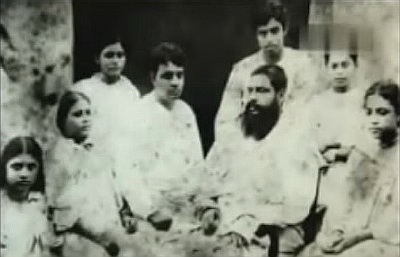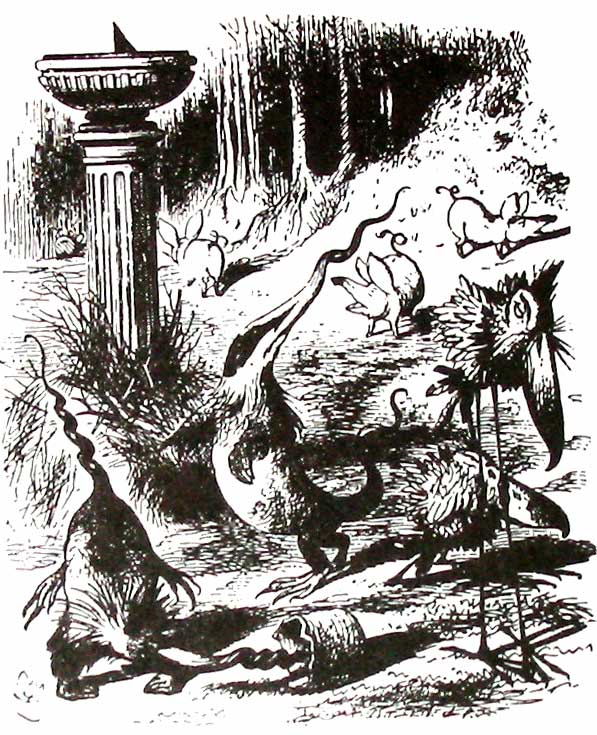|
Abol Tabol
''Abol tabol'' ( bn, আবোল তাবোল; ; 'The Weird and the Absurd') is a collection of Bengali children's poems and rhymes composed by Sukumar Ray, first published on 19th September 1923 by U. Ray and Sons publishers. It consists of 46 titled and seven untitled short rhymes (quatrains), all considered to be in the genre of nonsense literature. Significance Bengali readers were exposed to a new nonsense fantasy world by the poems in ''Abol Tabol''. This selection offers the best of Sukumar Ray's world of pun-riddled poetry. Although it was not understood at the time of its publication, many poems in ''Abol Tabol'' contain skilfully hidden satire on the state of society and administration of early 20th-century colonial India - mostly Bengal. Embedding implied hidden meanings of a subversive nature in nonsense rhymes for children, was Ray's clever way of subverting press censorship by the then British administration in India, which was paranoid about seditious and sub ... [...More Info...] [...Related Items...] OR: [Wikipedia] [Google] [Baidu] |
Sukumar Ray
Sukumar Ray (; 30 October 1887 – 10 September 1923) was a Bengali writer and poet from the Indian subcontinent. He is remembered mainly for his writings for children. He was the son of children's story writer Upendrakishore Ray Chowdhury and the father of Indian filmmaker Satyajit Ray. Family history According to the history of the Ray family, one of their ancestors, Ramsunder Deo (Deb), was a native of Chakdah village in Nadia district of present-day West Bengal, India. In search of fortune he migrated to Sherpur in East Bengal. There he met Raja Gunichandra, the zamindar of Jashodal, at the zamindar house of Sherpur. King Gunichandra was immediately impressed by Ramsunder's stately appearance and sharp intellect and took Ramsunder with him to his zamindari estate. He made Ramsunder his son-in-law and granted him some property in Jashodal. From then on Ramsunder started living in Jashodal. His descendants migrated from there and settled down in the village of Masua in Kat ... [...More Info...] [...Related Items...] OR: [Wikipedia] [Google] [Baidu] |
Bengali Language
Bengali ( ), generally known by its endonym Bangla (, ), is an Indo-Aryan languages, Indo-Aryan language native to the Bengal region of South Asia. It is the official, national, and most widely spoken language of Bangladesh and the second most widely spoken of the 22 scheduled languages of India. With approximately 300 million native speakers and another 37 million as second language speakers, Bengali is the List of languages by number of native speakers, fifth most-spoken native language and the List of languages by total number of speakers, seventh most spoken language by total number of speakers in the world. Bengali is the fifth most spoken Indo-European language. Bengali is the official language, official and national language of Bangladesh, with 98% of Bangladeshis using Bengali as their first language. Within India, Bengali is the official language of the states of West Bengal, Tripura and the Barak Valley region of the state of Assam. It is also a second official lan ... [...More Info...] [...Related Items...] OR: [Wikipedia] [Google] [Baidu] |
Poetry
Poetry (derived from the Greek ''poiesis'', "making"), also called verse, is a form of literature that uses aesthetic and often rhythmic qualities of language − such as phonaesthetics, sound symbolism, and metre − to evoke meanings in addition to, or in place of, a prosaic ostensible meaning. A poem is a literary composition, written by a poet, using this principle. Poetry has a long and varied history, evolving differentially across the globe. It dates back at least to prehistoric times with hunting poetry in Africa and to panegyric and elegiac court poetry of the empires of the Nile, Niger, and Volta River valleys. Some of the earliest written poetry in Africa occurs among the Pyramid Texts written during the 25th century BCE. The earliest surviving Western Asian epic poetry, the '' Epic of Gilgamesh'', was written in Sumerian. Early poems in the Eurasian continent evolved from folk songs such as the Chinese ''Shijing'', as well as religious hymns (the S ... [...More Info...] [...Related Items...] OR: [Wikipedia] [Google] [Baidu] |
Literary Nonsense
Literary nonsense (or nonsense literature) is a broad categorization of literature that balances elements that make sense with some that do not, with the effect of subverting language conventions or logical reasoning. Even though the most well-known form of literary nonsense is nonsense verse, the genre is present in many forms of literature. The effect of nonsense is often caused by an excess of meaning, rather than a lack of it. Its humor is derived from its nonsensical nature, rather than wit or the "joke" of a punchline. History Literary nonsense, as recognized since the nineteenth century, comes from a combination of two broad artistic sources. The first and older source is the oral folk tradition, including games, songs, dramas, and rhymes, such as the nursery rhyme ''Hey Diddle Diddle''. The literary figure Mother Goose represents common incarnations of this style of writing. The second, newer source of literary nonsense is in the intellectual absurdities of court p ... [...More Info...] [...Related Items...] OR: [Wikipedia] [Google] [Baidu] |
Pagla Dashu
Pagla Dashu ( bn, পাগলা দাশু; ''Crazy Dashu'') is a fictional boy character created by Bengali writer Sukumar Ray. A collection of Pagla Dashu stories translated into English was published as ''The Crazy Tales of Pagla Dashu and Co'' in 2012. Characteristics Pagla Dashu is a character appearing in several prominent works of Bengali literature from the early 20th century, most notably ''Pagla Dashu'' (1940). He is a school boy, and although he mainly acts like a maniac, he is famous for his crazy ideas and often inexplicable acts that carry subtle, comedic satire. Pagla Dashu stories are mainly for children, fun to read and creative. Pagla Dashu has become one of the very popular characters of Bengali literature, like many other characters created by Sukumar Ray, a popular Bengali author of nonsense poetry. Translations Pagla Dashu was translated from Bengali to Hindi by Lav Kanoi, a graduate student of Jadavpur University Jadavpur University is a publi ... [...More Info...] [...Related Items...] OR: [Wikipedia] [Google] [Baidu] |
Bengali-language Literature
Bengali ( ), generally known by its endonym Bangla (, ), is an Indo-Aryan language native to the Bengal region of South Asia. It is the official, national, and most widely spoken language of Bangladesh and the second most widely spoken of the 22 scheduled languages of India. With approximately 300 million native speakers and another 37 million as second language speakers, Bengali is the fifth most-spoken native language and the seventh most spoken language by total number of speakers in the world. Bengali is the fifth most spoken Indo-European language. Bengali is the official and national language of Bangladesh, with 98% of Bangladeshis using Bengali as their first language. Within India, Bengali is the official language of the states of West Bengal, Tripura and the Barak Valley region of the state of Assam. It is also a second official language of the Indian state of Jharkhand since September 2011. It is the most widely spoken language in the Andaman and Nicobar Islands ... [...More Info...] [...Related Items...] OR: [Wikipedia] [Google] [Baidu] |
Children's Poetry Books
A child ( : children) is a human being between the stages of birth and puberty, or between the developmental period of infancy and puberty. The legal definition of ''child'' generally refers to a minor, otherwise known as a person younger than the age of majority. Children generally have fewer rights and responsibilities than adults. They are classed as unable to make serious decisions. ''Child'' may also describe a relationship with a parent (such as sons and daughters of any age) or, metaphorically, an authority figure, or signify group membership in a clan, tribe, or religion; it can also signify being strongly affected by a specific time, place, or circumstance, as in "a child of nature" or "a child of the Sixties." Biological, legal and social definitions In the biological sciences, a child is usually defined as a person between birth and puberty, or between the developmental period of infancy and puberty. Legally, the term ''child'' may refer to anyone below the ... [...More Info...] [...Related Items...] OR: [Wikipedia] [Google] [Baidu] |
1923 Children's Books
Nineteen or 19 may refer to: * 19 (number), the natural number following 18 and preceding 20 * one of the years 19 BC, AD 19, 1919, 2019 Films * ''19'' (film), a 2001 Japanese film * ''Nineteen'' (film), a 1987 science fiction film Music * 19 (band), a Japanese pop music duo Albums * ''19'' (Adele album), 2008 * ''19'', a 2003 album by Alsou * ''19'', a 2006 album by Evan Yo * ''19'', a 2018 album by MHD * ''19'', one half of the double album ''63/19'' by Kool A.D. * ''Number Nineteen'', a 1971 album by American jazz pianist Mal Waldron * ''XIX'' (EP), a 2019 EP by 1the9 Songs * "19" (song), a 1985 song by British musician Paul Hardcastle. * "Nineteen", a song by Bad4Good from the 1992 album '' Refugee'' * "Nineteen", a song by Karma to Burn from the 2001 album ''Almost Heathen''. * "Nineteen" (song), a 2007 song by American singer Billy Ray Cyrus. * "Nineteen", a song by Tegan and Sara from the 2007 album '' The Con''. * "XIX" (song), a 2014 song by Slipknot. ... [...More Info...] [...Related Items...] OR: [Wikipedia] [Google] [Baidu] |
1923 Poetry Books
Nineteen or 19 may refer to: * 19 (number), the natural number following 18 and preceding 20 * one of the years 19 BC, AD 19, 1919, 2019 Films * ''19'' (film), a 2001 Japanese film * ''Nineteen'' (film), a 1987 science fiction film Music * 19 (band), a Japanese pop music duo Albums * ''19'' (Adele album), 2008 * ''19'', a 2003 album by Alsou * ''19'', a 2006 album by Evan Yo * ''19'', a 2018 album by MHD * ''19'', one half of the double album ''63/19'' by Kool A.D. * ''Number Nineteen'', a 1971 album by American jazz pianist Mal Waldron * ''XIX'' (EP), a 2019 EP by 1the9 Songs * "19" (song), a 1985 song by British musician Paul Hardcastle. * "Nineteen", a song by Bad4Good from the 1992 album '' Refugee'' * "Nineteen", a song by Karma to Burn from the 2001 album ''Almost Heathen''. * "Nineteen" (song), a 2007 song by American singer Billy Ray Cyrus. * "Nineteen", a song by Tegan and Sara from the 2007 album '' The Con''. * "XIX" (song), a 2014 song by Slipknot. ... [...More Info...] [...Related Items...] OR: [Wikipedia] [Google] [Baidu] |
Indian Poetry Collections
Indian or Indians may refer to: Peoples South Asia * Indian people, people of Indian nationality, or people who have an Indian ancestor ** Non-resident Indian, a citizen of India who has temporarily emigrated to another country * South Asian ethnic groups, referring to people of the Indian subcontinent, as well as the greater South Asia region prior to the 1947 partition of India * Anglo-Indians, people with mixed Indian and British ancestry, or people of British descent born or living in the Indian subcontinent * East Indians, a Christian community in India Europe * British Indians, British people of Indian origin The Americas * Indo-Canadians, Canadian people of Indian origin * Indian Americans, American people of Indian origin * Indigenous peoples of the Americas, the pre-Columbian inhabitants of the Americas and their descendants ** Plains Indians, the common name for the Native Americans who lived on the Great Plains of North America ** Native Americans in the Un ... [...More Info...] [...Related Items...] OR: [Wikipedia] [Google] [Baidu] |



.jpg)

